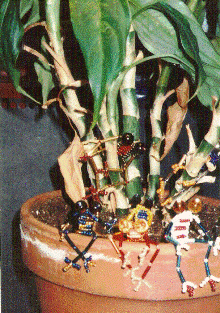
Lenin Square today; image: Timm Suess
An interesting topic I worked on this week was a retrospective about Chernobyl.
Initially, I was hesitant to take on the assignment because well, it's not one of the most cheerful topics one can think of. But I do have a personal connection with it and remember the day of the worst nuclear disaster in history very well: I was in 6th grade, talking with my two best friends before school and one of them said: "Did you hear the news? A nuclear reactor exploded in Chernobyl." Of course, when you're 12 years old, you can't really imagine what that means. And, let's face it, many smarter and experienced professionals in high places couldn't fathom the impact of the disaster either and their delay caused suffering for so many people.
I remember it was an unusually muggy day in April; it felt as if the radiation had already made its way over and was heating up the atmosphere. It definitely affected my circulation so that on the way from one classroom to the next, I fainted. Just like that, while going up a flight of stairs. The next thing I remember was being carried up the stairs by the janitor and all my classmates staring at me. Not the best way for a teenage girl to draw attention to herself...

Girls in Pripyat during happier times; image: Ari Shohat
But that way, the Chernobyl tragedy and the mood of the day will be forever etched into my memory. During the research for the article, I came across a photographer's website who had recently been on a two-day trip to Chernobyl . I didn't know that this was even possible but since 2002, the "zone of alienation" (the 30km-radius around the Chernobyl Nuclear Power Plant) is open to visitors.
What about radiation? Good question. Apparently, most of it came down during the first year after the disaster. Now, there are areas of different radiation levels and as long as one stays away from the critical ones, it's fine. But a Geiger counter has to be one's constant companion in "the zone."
Still, I had more questions and luckily Timm Suess, the photographer, agreed to talk to me about his trip and his work. Check out the photographs on
his website - they are amazing! He has also posted a journal about the trip that is very down-to-earth and informative.

Abandoned amusement park, set to open on 1st May 1986;
image: Timm Suess
The other lucky development during the research phase was that I found good resources with a decent amount of useful pictures of Chernobyl "before" - which is not so easy to find. Especially useful was old propaganda material and quotes from officials who had stated that the "chances of a nuclear fallout were 1 in 10,000" and that nuclear energy and the Chernobyl plant were absolutely safe. Yeah, right.
Then, there was the story of the city of Pripyat - the place that housed the nuclear plant - with a population of 50,000. All hopeful people, many young couples, thankful to have jobs and a good standard of living. In short - people were happy, didn't know anything about the dangers of radiation and just ran into their fate with wide open eyes.
The most shocking bit of news for me is still the fact that because of the officials' ignorance and inability to accept the disaster, the people of Pripyat went about their business as usual for three days after the disaster! Nobody evacuated them immediately, which could have saved thousands of lives. No, children played in the radioactive sand, mothers fed their families with radioactive food and fathers went to work next to a reactor that had just melted down. When people finally realized that something was awefully wrong, most of them got drunk, trying to "disinfect" their bodies with vodka.
Here is the
full story with more pictures.
 Image: Jeff Kubina
Image: Jeff Kubina Image: Fred Jacobs
Image: Fred Jacobs Image via ccablog
Image via ccablog





